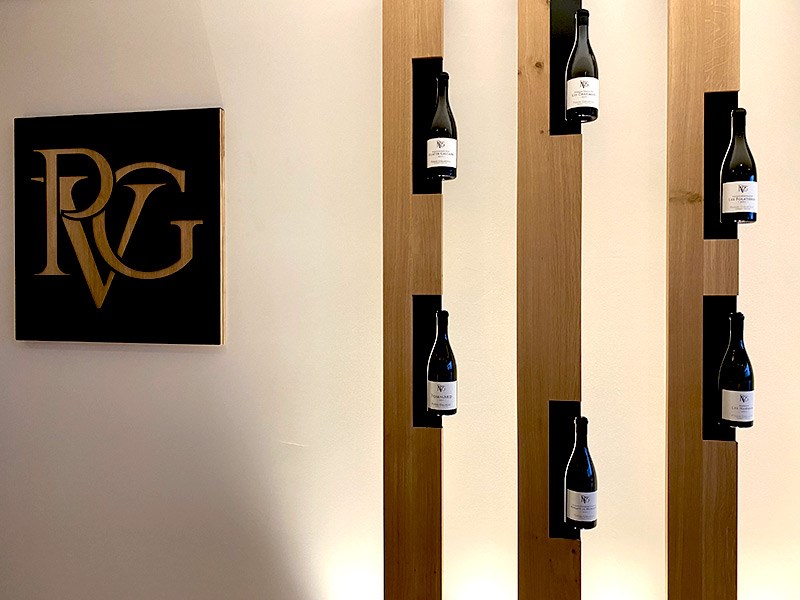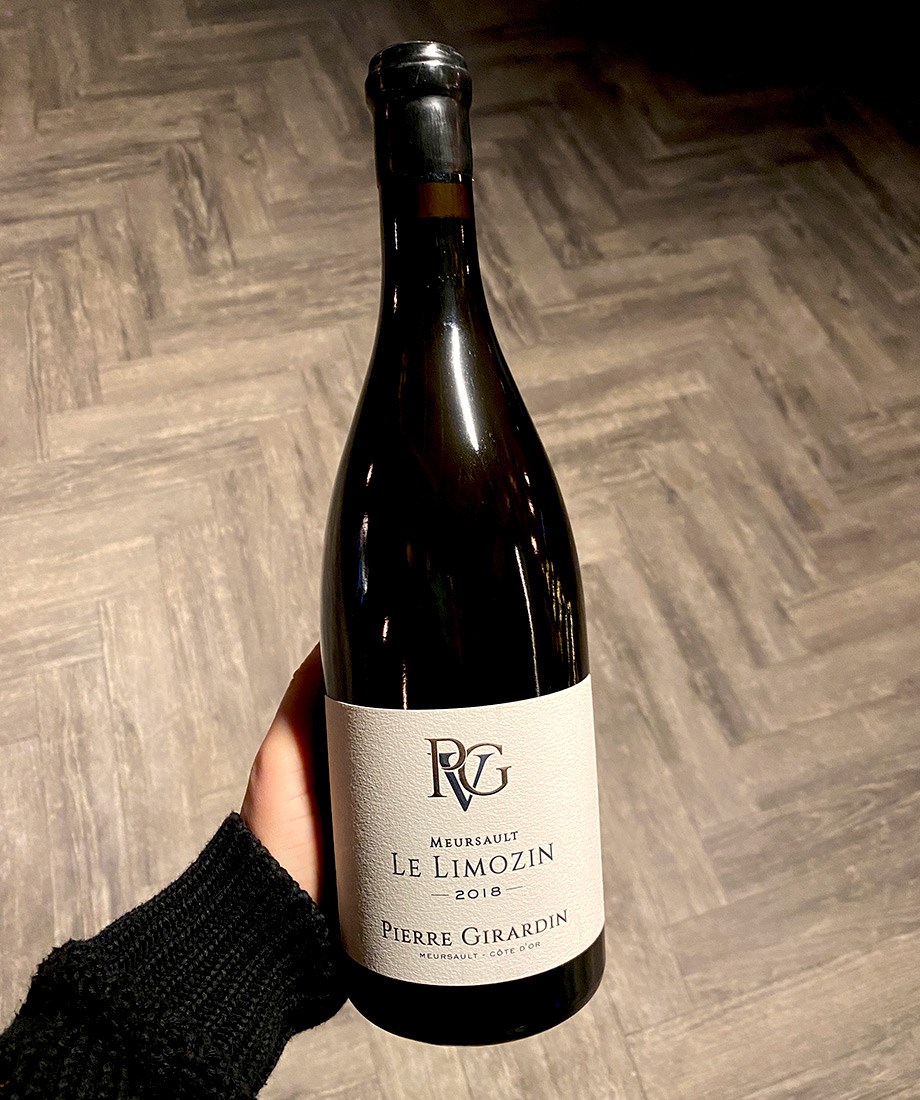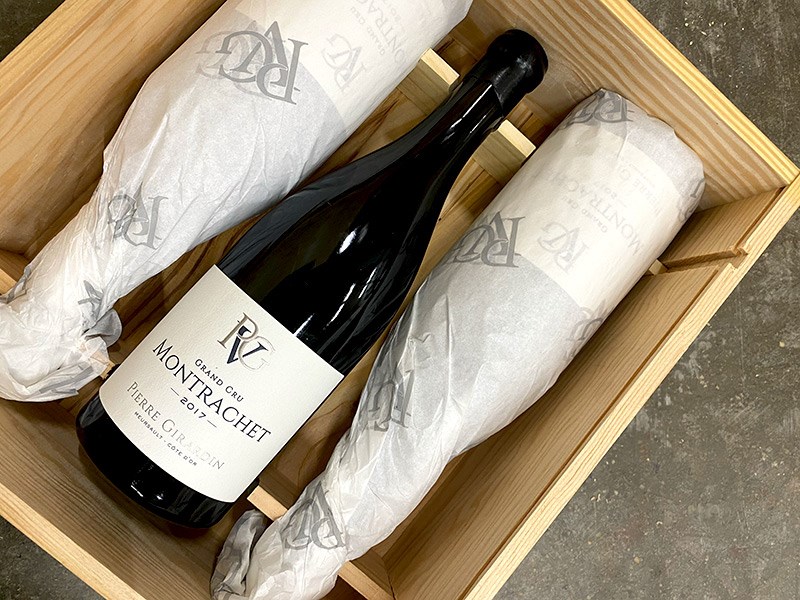Article - RareWine Academy
Pierre-Vincent Girardin | The Rising Star Of Burgundy?
The ambition level is gigantic. The vision is clear. And the physical wine frames are futuristic and state-of-the-art. Girardin has set himself up for fame.
Pierre-Vincent Girardin - A Burgundian Rising Star
“Few emerging Côte de Beaune winemakers are making more of a stir than 21-year-old Pierre Vincent Girardin.”
– Willian Kelley, Wine Advocate
The above quote is from 2020 and refers to his 2017 debut vintage. The young Pierre Vincent Girardin has gotten a little older, and he may be young, but had you grown up and been lovingly entangled in French vines, your wine knowledge would also have been immense even in your early adulthood.
There is certainly no sign of inexperience in Pierre-Vincent Girardin. His vision for his winery is crystal clear. His perfectionism is bulletproof and his belief in his own philosophy has cemented his eligibility in the best vineyards of Burgundy.
If you are not already familiar with Domaine Pierre Giradin, it is probably because he represents a whole new generation of Burgundy winemakers - and it was only in 2017 that Pierre-Vincent Giradin officially established his own domain in Meursault.
A Humble Talent With Unique Abilities
Rasmus Nielsen (RareWine's founder) spotted Pierre Vincent Girardin's talent early on, and even before the hype found its way to Girardin, Rasmus frequented the young winemaker's home. We have followed Girardin from the start and regularly visited him since 2020, and today all wine connoisseurs want to visit the exuberant talent.
On one of our visits to Girardin, Rasmus, Pierre-Vincent Girardin and other established winemakers were having dinner, and wine is a natural part of that. And here Rasmus decided to serve the wines blind and let the professionals guess the vineyard, wine, and vintage.
At first wine served, Girardin tastes last, and is spot on in terms of vineyard, wine, and vintage. Lucky? No, it was not. For the next wine served, Girardin starts and again guesses three out of three correctly. With his slightly shy and humble being, he excels in wine knowledge like a true master.
"The time to enjoy Pierre-Vincents Girardin's exceptional wines is now, while they are still affordable. In the future, prices will look completely different"
- Rasmus Nielsen
It Runs In His Veins, It Flows In His Blood..
..Wine passion, that is. And while the world may not yet know his name, Girardin is actually not a foreign name in Burgundy. Pierre's father Vincent Girardin was a proud 12th generation winemaker, although in 2011 he decided to sell the majority of the house's vineyards. Vincent kept 4.5 hectares in Pommard, Volnay and Meursault - because even though he himself was looking for new challenges, he left the wine gate open in case the wine also ran in Pierre's veins.
Pierre grew up among wine barrels, and throughout his childhood he followed in his father's footsteps - in the vineyards as well as in the cellar. It was therefore not surprising that Pierre would open the gate. And even though he did not have many hectares at his disposal, nothing was going to stop him on his journey towards making fabulous wine from the family's vines.

Domaine Pierre Girardin: Like Father, Like Son - And Yet Completely His Own
Pierre found it quite natural to poke his nose inquisitively, and from a very young age he took part in professional discussions and conversations with various Burgundy lovers. So, when his father officially stepped down, it did not take much thought before Pierre agreed to take over - even though in 2011 he was only 15 years old and too young to even taste his own wine.
Pierre-Vincent and his father began preparing for Pierre's inauguration, and together they worked with the family's vines - Pierre streamlined his own philosophy and the pieces of the winemaking puzzle were put in place: The motive was Pierre's own ideas.
It was a time of reflection, and Vincent Girardin reportedly said that he learnt much more in the short schooling process with Pierre than he did in the years he was in charge of the winemaking. Pierre outgrew his father's footsteps and found a style that is all his own. A style that has made him one of Burgundy's newest and brightest shooting stars.
Lunar Calendar And Biodynamics
Nothing is left to chance in Pierre-Vincent Girardin's winemaking. He has introduced biodynamic methods. Biodynamic methods that got a lot of publicity when both Anne-Claude Leflaive and Lalou-Bize Leroy started operating according to these methods. Two women who have marked themselves as some of the best winemakers in the world.
The lunar calendar is also getting a voice when Pierre turns grapes into wine. Since ancient times, both the position of the moon and the stars have played a crucial role in agricultural traditions around the world, determining when to plant, how to care for the soil, when to prune and when to harvest. And with biodynamics, the outdated but noble tradition was revived. And so, the lunar calendar is also important to Pierre-Vincent Girardin.
In addition, he raises the espaliers in his vineyards and allows them to grow more than is traditional in Burgundy, which is also seen at another of Burgundy's great producers who succeeded at rocket speed - Charles Lachaux at Domaine Arnoux-Lachaux, where the Poussard method has been modified and made Charles' very own.
And of course, it is not only in the vineyard that Pierre has made his mark. He wanted to make white wines with sublime purity, which is why he ordered custom-made 456 litre barrels from Tonnellerie Francois Freres, who have a high international reputation for bringing exceptional wines to life in France and around the world through custom-made barrels and casks. Because the barrels are much larger than standard French barrels, there is a proportionally smaller contact surface between barrel and wine. Naturally, this means that aromas that usually come from the oak are reduced at Girardin.
Bonus info: Traditionally, so-called 'barriques' have been used, which in Bordeaux have a capacity of 225 litres, while in Burgundy there has been a tradition of a marginally larger barrel of 228 litres.

Terroir, Terroir, Terroir
If you can say that someone is a man of the terroir, Pierre-Vincent Girardin is just that. He wants to express the mineral side of Burgundy in his white wines rather than wines that are too dense and concentrated.
One way Pierre-Vincent Girardin seeks to emphasise the terroir is by performing little or no pigeage. Pigeage is the process of breaking the thick layer of stems, skins, and seeds on the surface of the fermented red wine. Instead of pumping the must over the skins (remontage), the must is pressed down to extract colour, tannins, aromas, and flavours. By reducing pigeage and forgoing filtration, he creates an opportunity to preserve the raw elements of the wine - giving terroir the best conditions.
Furthermore, he has reduced the amount of sulphur in his winemaking process, which also comes as a result of switching to larger barrels. The larger barrels result in less evaporation - allowing him to reduce the use of sulphur dioxide.
Although many winemakers have a tradition of using sulphur in all phases of vinification, and it is also a weapon against oxidation, there has also been an increasing focus on the fact that sulphur makes wines more standardised. And if you are a man of terroir, standardisation is the last thing you want to achieve.

The Fight Against Early Oxidisation Is In The Details
White Burgundy has gained popularity in recent years, but with white Burgundy comes the fear of premature oxidation. This was a phenomenon that was first recognised at the beginning of this millennium. The phenomenon particularly affected white Burgundies produced around 1995/1996, although it was not exclusively these vintages that were affected.
The early oxidation obviously meant that the top producers' finest wines, which by nature should be able to age and mature for a long, long time, suddenly lost power much earlier than expected. This is also a problem Pierre-Vincent Girardin is aware of, which is why he is doing everything in his power to eliminate the threat. And while there is still no consensus on what exactly causes early oxidation, there are some theories. And these are the ones Girardin is aware of.
Pierre-Vincent reportedly presses his grapes very hard - a process that takes up to three hours. The pressing also results in dry extract from the grapes, which adds texture to the wine. In addition, Girardin makes sure to keep his cellar very cold. He buys his corks from Sardinia because he has learnt through his own research that they are extra dense; unlike corks he has used before. Therefore, you will notice that the cork is longer than you are used to on Girardin's bottles.
He also waxes the tops of his bottles to add an extra layer of protection. His choice of the aforementioned larger oak barrels also helps to preserve the freshness of the wine, and the wax is also carefully chosen.
The Wines Of Pierre-Vincent Girardin
Pierre-Vincent Girardin took over 4.5 hectares from his father, but that was not enough. Since then, he has acquired additional parcels, so today he has 7.3 hectares at his disposal. And because of the family's solid network in Burgundy, Pierre-Vincent Girardin was able to sign long-term contracts with some of Burgundy's finest growers - allowing him to supplement his vineyards. But there are special requirements for growers. They must, of course, share his meticulous viticultural philosophy.
One thing is for sure. Pierre has a great talent for seeking out often overlooked parcels in the Côte de Beaune, and has even managed to obtain grapes from Montrachet, Bâtard-Montrachet, Chevalier-Montrachet, Corton and Corton-Charlemagne. Pierre has managed to achieve solid partnerships with farmers with unique terroirs and philosophies.
Grand Cru From Pierre-Vincent Girardin
Girardin's portfolio includes no less than nine Grand Cru wines, with names like Montrachet, Corton-Charlemagne and Chambertin becoming the envy of many wine connoisseurs. Pierre-Vincent is not blind to privilege and takes great pride in producing wines from some of Burgundy's great vineyards. His first proper vintage is the 2018 vintage, and RareWine founder Rasmus Nielsen paid Pierre-Vincent a visit - specifically in connection with the 2018 vintage.
Montrachet is one of Burgundy's most sought-after vineyards, where some of the world's richest, most structured, and age-worthy wines are born. Pierre-Vincent Girardin's Montrachet comes from vines that are more than 95 years old.
The vines for Girardin's Corton-Charlemagne la Croix are not quite 100 years old, but 70 years old, which is also very impressive. The fruit for the wine comes from organically grown vines located on the Aloxe side of Corton-Charlemagne right next to the significant Corton-Charlemagne cross - which is said to be the best part of the area.
Amongst these gems is Girardin's Corton Clos di Roi, which according to William Kelley from The Wine Advocate is: "The finest of Girardin's Côte de Beaune reds".
From Pierre Girardin also comes a Bâtard-Montrachet made from 80-year-old organically grown vines rooted on the Chassagne side of the vineyard. The location of this parcel is probably one of the most ideal in Bâtard.
In addition to the above, Pierre-Vincent also has parcels in Mazis-Chambertin, Clos de Vougeot, and Griottes Chambertin. Together, it is a terroir team rarely seen in Burgundy - at least under the same producer.
Pierre-Vincent Girardin: Premier Cru
As with the great Grand Cru wines, Girardin also creates fabulous wines at the Premier Cru level. And he does so from a wide range of parcels that include Les Epenottes, Clos des Chênes, Les Suchots, Les Perrières, Aux Clos, Les Pucelles, Les Murgers des Dents de Chien, and Lavaux Saint-Jacques to name but a few.
With such a wide arsenal of parcels, he is able to create wines with massive diversity - but in very small quantities. He rarely has many hectares on each parcel - and he keeps quantities low to promote quality.
Although Pierre-Vincent does not own all the parcels he makes wine from, he knows one hundred percent of what's going on. Some of the parcels he grows himself, even though it is not on his own deed. And if he does not cultivate the parcels himself, he trusts those who cultivate for him. He decides the harvest date himself, and in the cellar, he is his own master.
High Ambitions Consolidated With New Winery In Meursault
There is no indication that Pierre-Vincent Girardin is looking for the simple solution. Perfection is his driving force, and it is this towering ambition that has led to the creation of a new futuristic winery. At the southern end of Meursault, Girardin has created an impressive building. It is state-of-the-art and provides a perfect base for his ambitious wine production.
The facilities are sublime, and the cellar is controlled so that both temperature and humidity are at the perfect level for Girardin's needs. Creating your very own winery obviously requires some unique opportunities for a young winemaker - and, of course, important decisions about equipment. And this is exactly where space was made for the large 456-litre oak barrels, which are twice the size of a classic Burgundy barrel.
The winery punctuates its grandeur with its tasting room overlooking Meursault and the northern part of Puligny-Montrachet. Pierre-Vincent stages his fledgling life's work in state-of-the-art facilities and wine connoisseurs and influencers follow him closely to see where his high level of ambition takes him. And while his wine knowledge is massive and almost innate, he is still an up and coming youngster in the wine industry with very few releases on his CV. But he is off to a great start, and of his first Corton-Charlemagne, William Kelley of Wine Advocate says:
“This is an indisputably impressive debut Corton-Charlemagne.”
